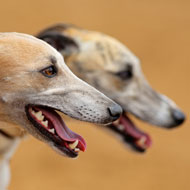Bat genes could hold clues for cancer treatment
New research published in this month's edition of Science examines the viruses carried by bats, their relatively long lives and the evolution of flight. Scientists believe that a deeper understanding of these could provide clues for preventing and treating infectious diseases and cancer in humans.
The researchers from CSIRO (Australia's national science research agency) and the Beijing Genome Institute, led a team sequencing the genomes of two bat species - an Australian mega bat, the black flying fox, and a Chinese micro bat, David's myotis. The teams then compared the bat genomes to the genomes of eight other mammals, including humans.
Chris Cowled, post-doctoral fellow at CSIRO's Australian animal health laboratory said that despite the fact that bats carry several lethal diseases, such as Hendra, Ebola and SARS, "they don't often succumb to disease from these viruses." As well as this they live relatively long lives in comparison to other animals of similar size, and are the only mammal that can fly.
Cowled added: "A deeper understanding of these evolutionary adaptations in bats may lead to better treatments for human diseases, and may eventually enable us to predict or even prevent outbreaks of emerging bat viruses."
According to Cowled, bats have "some novel genes" to deal with the toxins produced as by-products of flying. Some of these genes, such as P53, are implicated in the development of cancer, and the detection and repair of damaged DNA.
Cowled explains: "What we found intriguing was that some of these genes also have secondary roles in the immune system. We're proposing that the evolution of flight led to a sort of spill over effect, influencing not only the immune system, but also things like ageing and cancer."



 The Greyhound Board of Great Britain has published new vaccination guidance, with all greyhounds registered from 1 January, 2027 required to have the L4 leptospirosis vaccination, rather than L2.
The Greyhound Board of Great Britain has published new vaccination guidance, with all greyhounds registered from 1 January, 2027 required to have the L4 leptospirosis vaccination, rather than L2.